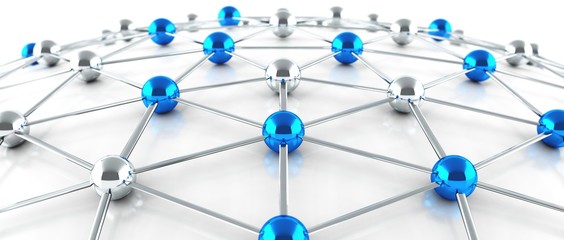What is Ionic or Electrovalent Compounds?
Ionic or Electrovalent Compounds
Do you know why a few compounds show solid conductivity, while some are quite moderate at it? If you somehow managed to soften such substances, you will find that they have a sharp liquefying point. For what reason does it occur? These substances are Ionic or Electrovalent compounds. In this section, we will have a more intensive take a gander at these ionic or electrovalent compounds. We should start.
Ionic or Electrovalent Bond
There are essentially three manners by which two atoms consolidate together to lose vitality and to wind up stable. One of the ways is by giving or tolerating electrons in order to finish their octet arrangement. The bond formed by this sort of blend is an ionic bond or electrovalent bond.
An Ionic bond is the bond formed by the total exchange of valence electron in order to achieve strength. This kind of holding prompts the formation of two oppositely charged particles. These incorporate the positive particle, cations and negative particles, anions. The nearness of two oppositely charged particles results in solid appealing force between them. This force is the ionic or electrovalent bond.
Properties of an Ionic Bond
Because of the nearness of a solid force of fascination among cations and anions in ionic fortified atoms, we watch the accompanying properties:
• The ionic bonds are the most grounded of the considerable number of bonds.
• The ionic bonds have a charge division. In this way, they are the most responsive of the considerable number of bonds in the correct medium.
• The ionic reinforced particles have high softening and breaking point.
• The ionic reinforced particles in their fluid arrangements or in the liquid state are great conductors of power. This is because of the nearness of particles which goes about as charge bearers.
Instances of Ionic Bonds
The accompanying table demonstrates the components and the particles formed by them when they lose or gain an e .
Element Electronic config. Reaction Formed particle
Na(11) 2,8,1 Na → Na+ + e– … Response 1 Na+
Ca(20) 2,8,8,2 Ca → Ca2+ + 2e– … .. Response 2 Ca2+
Cl(17) 2,8,7 Cl + e– → Cl– … .… . Response 3 Cl–
O(8) 2,6 O + 2e– → O2 … ..Response 4 O2-
Presently, when Na responds with Cl, response 1 and response 3 will occur. The resultant compound will be NaCl. At the point when Na responds with O, response 1 and response 4 will happen. The resultant compound will be Na2. For the situation when Ca responds with Cl, response 2 and response 3 will happen. The resultant compound will be CaCl2.
At the point when Ca responds with O, response 2 and response 4 will occur and the resultant compound will be CaO. We, presently have some information about ionic or electrovalent bonds. Give us now a chance to take a gander at what electrovalent compounds are and what their qualities are.
Electrovalent Compounds
The compounds which contain ionic or electrovalent bonds are Electrovalent or Ionic Compounds. Essentially electrovalent compounds are formed because of the response between very electropositive and exceedingly electronegative molecules.
Attributes of Electrovalent Compounds
• Crystal Structure: In the strong condition of electrovalent compounds, anions and cations are organized in a normal way. This is a precious stone in which anions are encompassed by a clear number of cations and the other way around.
• Physical Nature: Ionic or electrovalent compounds are commonly hard. Their hardness increments with expanding ionic charge and the diminishing separation between particles.
• Solubility:Positive particle of ionic compound connects to the negative piece of a polar dissolvable and negative particle of ionic compound append with the positive piece of the polar dissolvable. Therefore, ionic or electrovalent compounds are dissolvable in polar solvents like water and insoluble in non-polar solvents like benzene, ether, liquor.
• Melting Point and Breaking point: Electrovalent or ionic compounds have high dissolving and breaking points since they need a lot of vitality to break solid ionic bonds.








No comments